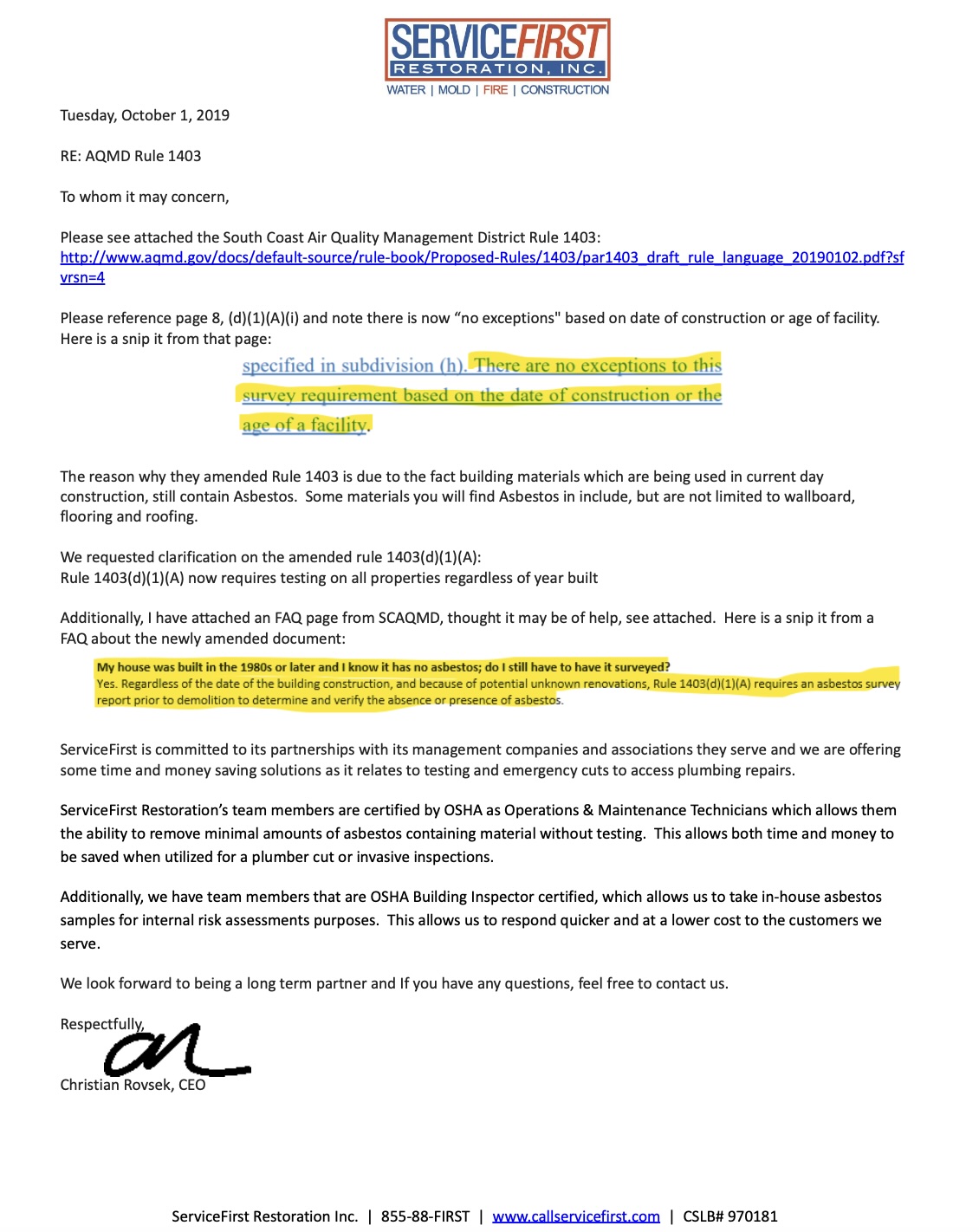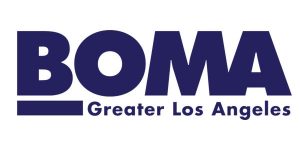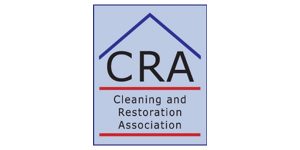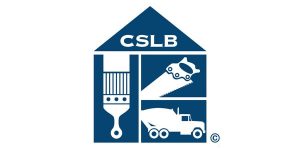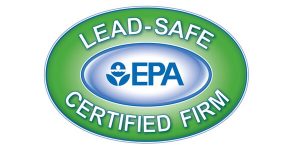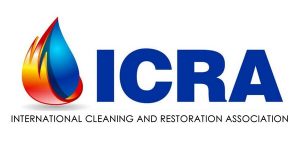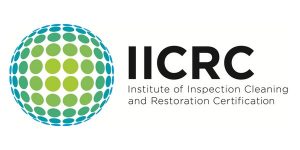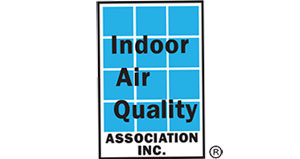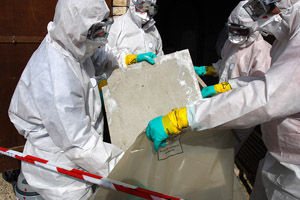
When it comes to managing asbestos in demolition and renovation projects, one of the most important regulations to understand is the South Coast Air Quality Management District (AQMD) Rule 1403. This rule works in tandem with the Environmental Protection Agency (EPA) regulations to ensure the safety of both workers and the public from exposure to asbestos. Whether you’re a property owner, contractor, or facility manager, it’s crucial to know when asbestos testing is required and how to comply with these regulations to avoid penalties and health risks.
What is AQMD Rule 1403?
AQMD Rule 1403 governs the demolition and renovation activities that could disturb asbestos-containing materials (ACMs). It outlines specific requirements for identifying, handling, and disposing of asbestos in such a way that minimizes the release of asbestos fibers into the air.
Under Rule 1403, before any renovation or demolition of a building or facility, the owner or operator must survey the building for asbestos. This survey must be conducted by a certified asbestos consultant or contractor. If asbestos is found, special procedures must be followed to ensure its safe removal and disposal. The rule applies to both commercial and residential properties, with certain exemptions for single-family homes under specific circumstances.
When Do You Need to Test for Asbestos?
The EPA requires testing for asbestos any time a building is being renovated or demolished, regardless of its age or location. This applies to all buildings, including commercial, industrial, and multi-family residential properties. While single-family homes are sometimes exempt from AQMD Rule 1403, the EPA’s National Emission Standards for Hazardous Air Pollutants (NESHAP) regulations still require testing in most other situations.
Key instances when you must test for asbestos include:
- Pre-Demolition: Before any demolition work can begin, a thorough asbestos inspection is required to identify and quantify any ACMs. This is critical, as demolition activities can release asbestos fibers into the air, posing serious health risks to workers and the surrounding community.
- Pre-Renovation: If you’re planning to renovate a building, even if the work seems minor, asbestos testing must be performed. Renovation activities such as cutting, sanding, or drilling can disturb asbestos materials, making it necessary to test beforehand to avoid exposure.
- Repair Work: In addition to demolition and renovation, certain repair activities—like fixing a leaking roof or replacing insulation—can disturb asbestos-containing materials. Before proceeding with repairs, it’s essential to test for asbestos to prevent accidental exposure.
Why Is Asbestos Testing Important?
Asbestos fibers, when inhaled, can cause serious health issues, including lung cancer, mesothelioma, and asbestosis. Since asbestos was commonly used in building materials such as insulation, roofing, flooring, and wall textures prior to the 1980s, it’s still frequently found in older structures. Even newer buildings may contain asbestos due to leftover stockpiles or imported materials.
The EPA’s regulations are designed to prevent asbestos exposure by requiring comprehensive testing, proper handling, and safe removal of asbestos materials. Non-compliance with these regulations can result in significant fines and penalties, in addition to putting people’s health at risk.
How to Comply with AQMD Rule 1403 and EPA Regulations
To ensure compliance with both AQMD Rule 1403 and EPA requirements, follow these steps:
- Hire a Certified Asbestos Consultant: Always use a qualified asbestos inspector to perform the asbestos survey. They will test suspected materials and document any findings.
- Submit Necessary Notifications: If asbestos is found, you will need to notify AQMD and, in some cases, the EPA before beginning work. They will provide guidelines for handling and removal.
- Abatement Procedures: If asbestos is present, ensure that a licensed asbestos abatement contractor is used to safely remove and dispose of it. Never attempt to handle or remove asbestos on your own.
- Proper Disposal: Follow the specific disposal procedures for asbestos-containing materials to ensure they are transported and disposed of in an EPA-approved landfill.
Conclusion
Understanding AQMD Rule 1403 and the EPA’s asbestos testing requirements is critical for anyone involved in building renovation, demolition, or repair. Compliance not only protects the health of workers and the public but also helps avoid costly fines. If you’re planning a project, always start by hiring a certified asbestos consultant to perform testing. It’s a small investment that ensures safety and regulatory compliance.
By staying informed and proactive, you can successfully navigate asbestos regulations and contribute to a safer, healthier environment.
Here is a letter from ServiceFirst regarding rule 1403:
